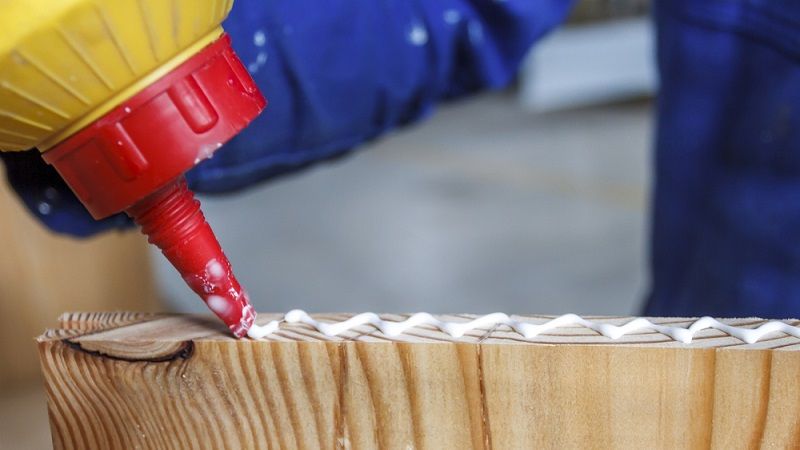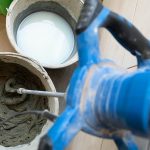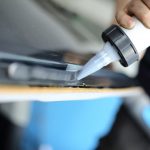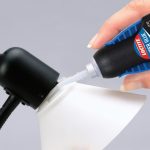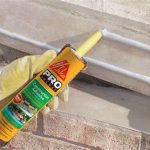Are you looking for a strong and durable adhesive to join aluminum and MDF? Glueing aluminum to MDF is easy when you have the right tools and techniques.
Bonding aluminum with MDF is simple when you use the right glue and technique.
Take your DIY projects to the next level by attaching aluminum parts! Learn how to glue aluminum to MDF for strong bonds that will withstand wear and tear over time. Read on for all the in-depth information you need!
What is MDF and Aluminum?
Contents
- 1 What is MDF and Aluminum?
- 2 How to Prepare Aluminum To MDF Before Gluing
- 3 The Different Types of Glue for Gluing Aluminum to MDF
- 4 How to Glue Aluminum to MDF
- 5 What is the Best Glue for Gluing Aluminum to MDF?
- 6 Does Gorilla Glue Bond Wood to Aluminum?
- 7 What Kind of Glue Should I Use on MDF?
- 8 Tips and Tricks for Gluing Aluminum to MDF
- 9 Conclusion
MDF (Medium Density Fiberboard) is a composite wood product made from recycled wood fibers and glue. It is extremely strong and stable, making it perfect for furniture, shelving, and other home projects.
Aluminum is a lightweight metal that is highly resistant to corrosion and rust.
It is often used in construction and automotive applications due to its strength and durability.
With the right equipment, you can make just about anything from MDF or aluminum—so get creative and start building!
How to Prepare Aluminum To MDF Before Gluing
Gluing aluminum to MDF doesn’t have to be a challenge.
With the right preparation, it can be a breeze! Here’s how to prepare your aluminum for glueing:
Start by cleaning the aluminum surface with soap and water.
This will remove any dirt, dust, or debris that might hinder the glue’s adhesion. Next, lightly sand the aluminum to create a rougher surface for better adhesion.
Then, degrease the aluminum using a degreasing agent like acetone or denatured alcohol.
Prime the aluminum with an epoxy primer before gluing for extra adhesion.
Finally, use an emery cloth or sandpaper to rough up the surface of the aluminum even more for improved bonding.
With these easy steps in mind, you’ll be able to prepare your aluminum for gluing in no time!
The Different Types of Glue for Gluing Aluminum to MDF
There are several different types of glue that can help you get the job done. Epoxy is a strong adhesive that bonds two irregularly shaped surfaces together. Polyurethane glue is a water-resistant option that can be used outdoors and for bonding surfaces with gaps.
Contact cement is a fast-drying adhesive ideal for flat surfaces that need an immediate bond.
Super glue is a quick adhesive, and Gorilla Glue is a strong, waterproof adhesive that expands as it cures, making it great for larger projects or filling gaps.
How to Glue Aluminum to MDF
To ensure the best results, it is important to use the right kind of glue and properly prepare the surfaces.
Different types of glue can be used for bonding aluminum to MDF, including epoxy, polyurethane, and cyanoacrylate. Each type has its own advantages and disadvantages, depending on the application.
Before gluing aluminum to MDF, it is essential to clean the surfaces thoroughly with a degreaser or other suitable cleaner. This will help ensure a strong bond between the two materials.
When applying the glue, make sure it is spread evenly and allowed to dry completely before attaching the aluminum to the MDF. It is also important that there are no air bubbles or gaps between them when gluing them together.
The best glue for bonding aluminum to MDF is usually a two-part epoxy, as this provides a strong bond that can withstand extreme temperatures and harsh weather conditions.
Gorilla Glue can also be used for bonding aluminum to MDF, but should only be used in well-ventilated areas as it emits fumes while curing that can be hazardous if inhaled in large amounts over an extended period of time.
What is the Best Glue for Gluing Aluminum to MDF?
The two-part epoxy adhesive is the perfect choice! This type of glue is designed to adhere to both metal and wood surfaces, creating a strong bond that won’t easily break apart. It’s also resistant to water and other liquids, making it ideal for outdoor projects.
Plus, it’s easy to apply and can be found in most hardware stores or online.
So don’t wait any longer; get your two-part epoxy adhesive today and start building.
Does Gorilla Glue Bond Wood to Aluminum?
Gorilla Glue is the perfect solution. It’s renowned for its strength and versatility, making it the ideal choice for this type of project. However, there are certain steps that must be taken in order to ensure a successful bond.
For starters, the aluminum must be prepped with a light sanding or polishing before applying the glue. This will help create a better surface for the glue to adhere to.
Additionally, the wood should also be prepped by cleaning it with a damp cloth and then drying it completely before applying the Gorilla Glue.
Once these steps have been completed, you can apply the Gorilla Glue directly to both surfaces and press them firmly together for at least 30 seconds.
The bond should set in about 24 hours and will provide a strong hold between your aluminum and MDF materials.
So if you’re looking for an easy way to join wood and aluminum together, give Gorilla Glue a try.
What Kind of Glue Should I Use on MDF?
Not only is this type of adhesive strong and waterproof, but it also dries quickly and can be sanded or painted over after it has dried.
Other types of glue that can be used on MDF include cyanoacrylate (superglue), epoxy, and contact cement.
Whatever type of adhesive you choose, make sure to read the instructions carefully before using it on MDF.
Tips and Tricks for Gluing Aluminum to MDF
Gluing aluminum to MDF can be a tricky task, but with the right tips and tricks, you can create a strong bond that will last. Here are five essential tips to ensure success when gluing aluminum to MDF.
Firstly, make sure to clean both surfaces before gluing. Remove any dust, dirt, or debris from the aluminum and MDF with a damp cloth for optimal results.
Secondly, use clamps or weights to hold the pieces together while the glue sets. This will help ensure a secure bond between the two materials.
Thirdly, use an adhesive specifically designed for aluminum for the best results. Reading the instructions on your chosen adhesive is key to getting a good bond between the two materials.
Fourthly, use tape to temporarily secure pieces in place while you work on them. This will help prevent your pieces from moving around while you’re working on them and will result in a stronger bond when you apply the glue.
Finally, allow enough time for your chosen adhesive to set properly before removing clamps or weights and handling your project.
Conclusion
Gluing aluminum to MDF doesn’t have to be intimidating. With the right equipment and techniques, you can make strong and durable bonds that will last for years.
Start by preparing your materials with soap and water. Lightly sand the surfaces, degrease them, prime them with epoxy primer, and rough up the aluminum surface even more.
Choose from one of many glues—epoxy, polyurethane, contact cement, super glue, or gorilla glue—depending on your project’s requirements. Use clamps or weights to hold the pieces together until the glue sets. Allow ample time for it to dry completely before handling your project.
By following these guidelines, you’ll establish strong links between aluminum and MDF that will withstand wear and tear over time.

